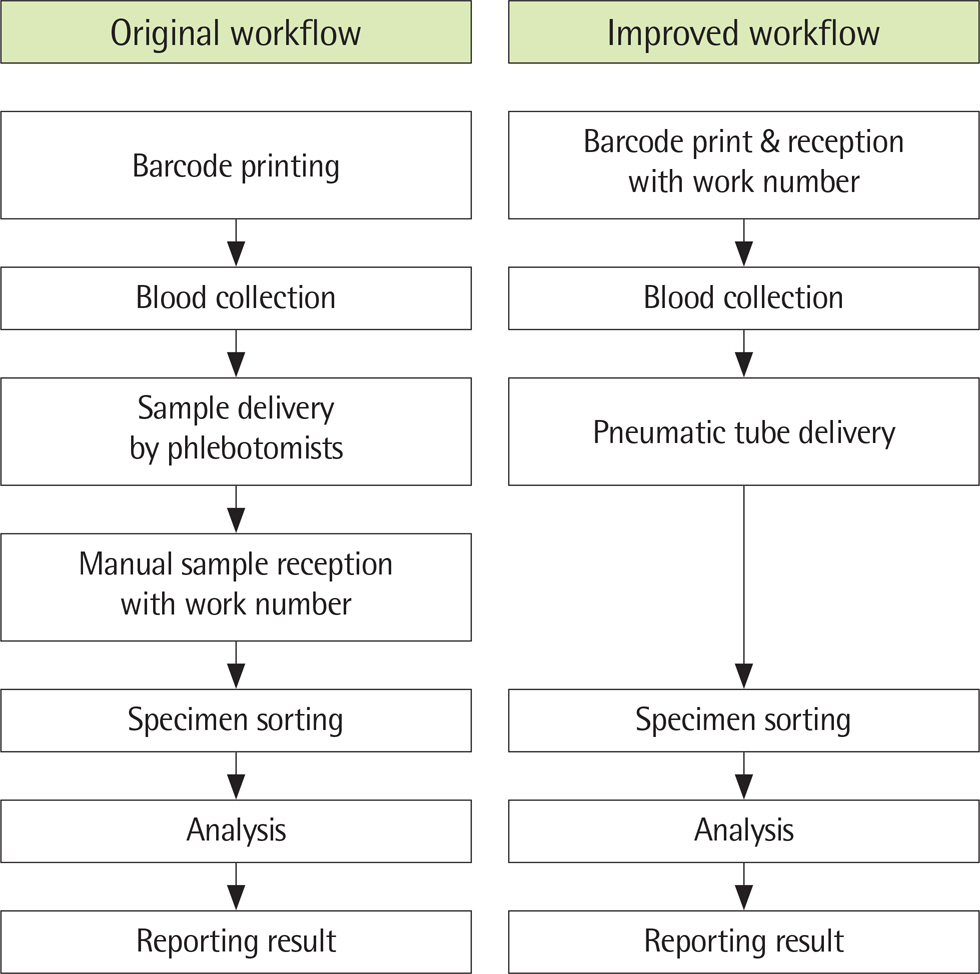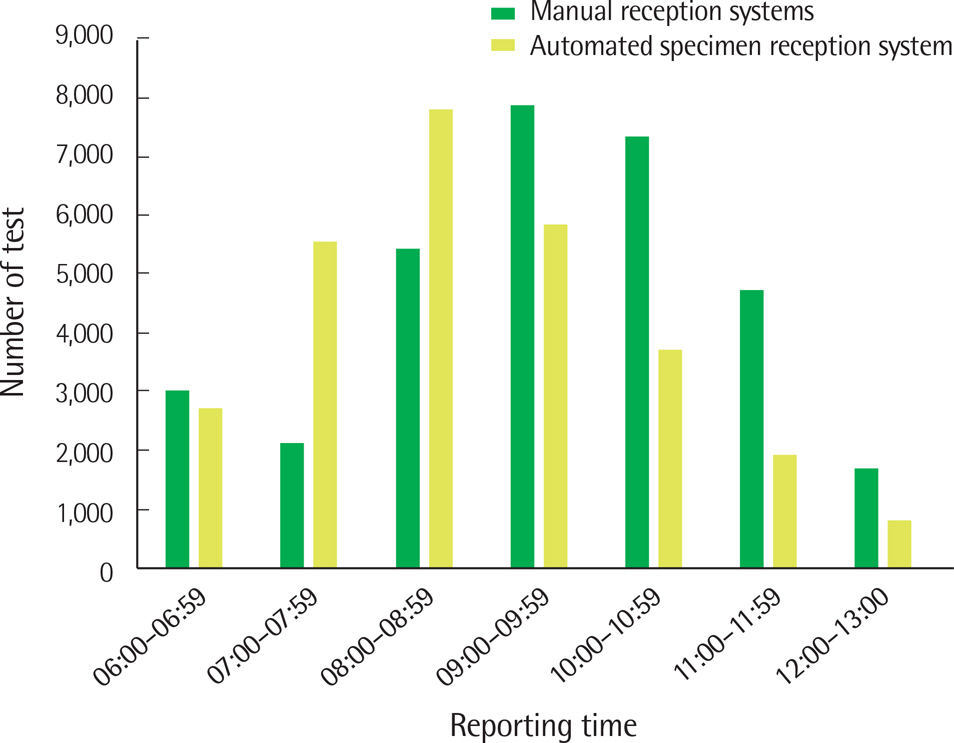Lab Med Online.
2018 Apr;8(2):52-55. 10.3343/lmo.2018.8.2.52.
Reducing the Reporting Time by Improving Laboratory Processing for Inpatient Routine Chemistry Tests
- Affiliations
-
- 1Department of Laboratory Medicine, The Catholic University of Korea, Uijeongbu St. Mary's Hospital, Uijeongbu, Korea.
- 2Department of Laboratory Medicine, Asan Medical Center, University of Ulsan College of Medicine, Seoul, Korea. wkmin@amc.seoul.kr
- KMID: 2407562
- DOI: http://doi.org/10.3343/lmo.2018.8.2.52
Abstract
- BACKGROUND
The returning time of inpatient specimen analysis is usually slow because phlebotomists deliver all the collected specimens at the end of their work cycle. In addition, manual specimen reception further delays the reporting time and imposes a heavy workload on the technical staff, thus compromising effectiveness. Therefore, we have created an automated specimen reception system to tackle testing delays and enhance the efficiency and quality of specimen collection and handling.
METHODS
In May 2015, the pre-analytical processing of inpatient samples was renovated. We automated the specimen reception in parallel with barcode printing and introduced pneumatic tubes to deliver samples for routine chemistry tests. We compared the reporting time of the automated system with that of the manual system and analyzed the distribution pattern of the specimens according to handling time.
RESULTS
The median reporting time was advanced by 41 minutes, from 09:33 AM to 08:52 AM for the manual and automated reception, respectively. Moreover, with the reduction in hands-on time, the blood specimens reached the laboratory immediately after phlebotomy, thereby improving the processing efficiency by spreading out the interval during which the specimens arrived in the laboratory. Additionally, the new system allowed the identification of the phlebotomist who collected the specimens and tracking the specimens from collection to test result.
CONCLUSIONS
With the introduction of our automatic reception system, the reporting time was considerably reduced. Therefore, the satisfaction of the clinician and the technical staff was improved.
Figure
Reference
-
1.Breil B., Fritz F., Thiemann V., Dugas M. Mapping turnaround times (TAT) to a generic timeline: a systematic review of TAT defnitions in clinical domains. BMC Med Inform Decis Mak. 2011. 11:34.
Article2.Pati HP., Singh G. Turnaround time (TAT): difference in concept for laboratory and clinician. Indian J Hematol Blood Transfus. 2014. 30:81–4.
Article3.Steindel SJ., Jones BA., Howanitz PJ. Timeliness of automated routine laboratory tests: a College of American Pathologists Q-Probes study of 653 institutions. Clin Chim Acta. 1996. 251:25–40.
Article4.Jones BA., Bekeris LG., Nakhleh RE., Walsh MK., Valenstein PN. Physician satisfaction with clinical laboratory services: a College of American Pathologists Q-probes study of 138 institutions. Arch Pathol Lab Med. 2009. 133:38–43.
Article5.Novis DA., Dale JC. Morning rounds inpatient test availability: a College of American Pathologist Q-Probes study of 79,860 morning complete blood cell count and electrolyte test results in 367 institutions. Arch Pathol Lab Med. 2000. 124:499–503.
- Full Text Links
- Actions
-
Cited
- CITED
-
- Close
- Share
- Similar articles
-
- Development of Secondary Order System for Laboratory Tests without Additional Blood Sampling
- Reorganization of Automated Outpatient Laboratory to improve Total
- Comparison of Method Group Precision in Proficiency Testing of Clinical Chemistry Tests Before and After Two Major Changes: Reorganization of Proficiency Testing and Implementation of the Differential Benefit for the Quality of Laboratory Tests
- Annual Report of the Korean Association of External Quality Assessment Service on General Chemistry (2022)
- Annual Report of the Korean Association of External Quality Assessment Service on General Chemistry (2021)



